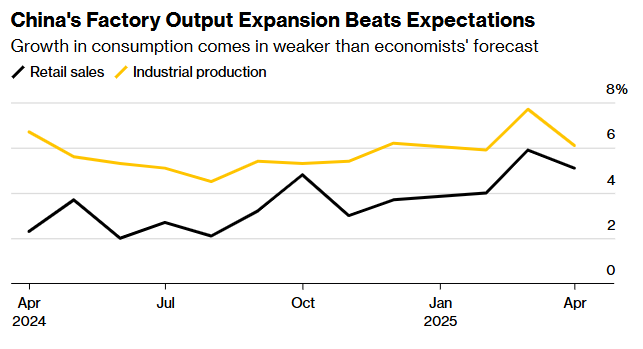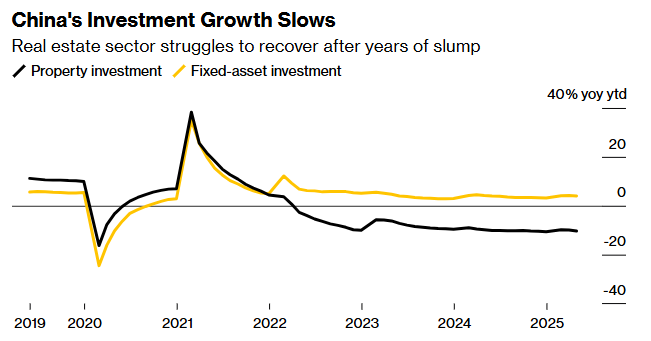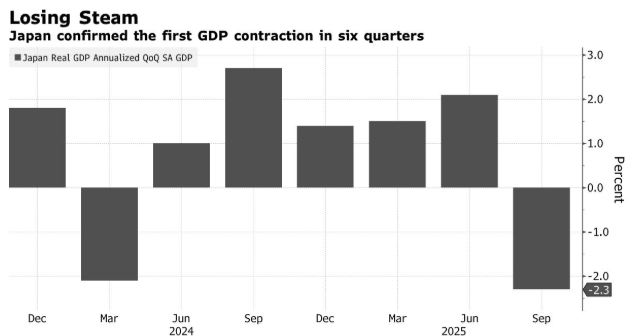China’s industrial output grew faster than expected in April, highlighting the resilience of the world’s second-largest economy and sparking optimism about growth after a rapid easing of trade tensions with the United States.
According to data released by the National Bureau of Statistics on Monday, industrial output by large enterprises rose 6.1% year-on-year last month, down from 7.7% in March. A Bloomberg survey of analysts showed that the median forecast was for a 5.7% increase.
As a key indicator of consumption, the total retail sales of consumer goods rose by 5.1%, lower than the 5.9% increase in the previous month and below economists’ expectations. In the first four months of this year, the growth rate of fixed asset investment slowed to 4%.

The urban unemployment rate dropped to 5.1% in April from 5.2% in March.
The offshore yuan was little changed against the US dollar at 7.2126. The yield on China’s 10-year government bonds edged down to 1.67%. After the data release, the index tracking Chinese stocks listed in Hong Kong narrowed its earlier losses.
This economic brief offers the most comprehensive account to date of how China is responding to the sharp escalation of trade tensions with the United States. Despite the 90-day tariff truce agreed upon by both sides in May, the uncertainty surrounding further negotiations on a final agreement may keep businesses cautious about expanding production or investing in new projects.
Despite this, the unexpected performance of industrial production further proves that China has successfully avoided a significant economic slowdown in response to the shock of Donald Trump’s trade war. The growth rate of exports in April also exceeded expectations, as companies shifted their products to Southeast Asia and Europe to make up for the sharp decline in exports to the United States.
Several major international banks, including Goldman Sachs Group Inc., raised their growth forecasts for China in 2025 last week, although these predictions are still below Beijing’s target of around 5%. Many economists also expect that the easing of tensions will give the government more time and it won’t need to deploy more stimulus measures to boost the economy.

Citigroup economist Yu Xiangrong wrote in a report last week: “The agreement reached between the United States and China may reduce the uncertainty of tariffs, and domestic policymakers may further shift into a wait-and-see mode.”
Morgan Stanley economists, including Robin Xing, have lowered their forecast for additional fiscal stimulus in the fourth quarter from a previous estimate of as much as 1.5 trillion yuan in July-September to 1 trillion yuan ($139 billion).

However, the weakness in retail sales in April indicates that the boost from the government’s subsidy program for new consumer goods such as mobile phones and household appliances is fading, suggesting that more supportive policies are needed.
Amid years of sluggish real estate market and concerns that the trade war could lead to job cuts in China’s vast manufacturing and export sectors, consumer confidence remains fragile. Citigroup economists said that in April, the proportion of time deposits in all household accounts reached a record high, suggesting that people may still be in a deleveraging mode.


